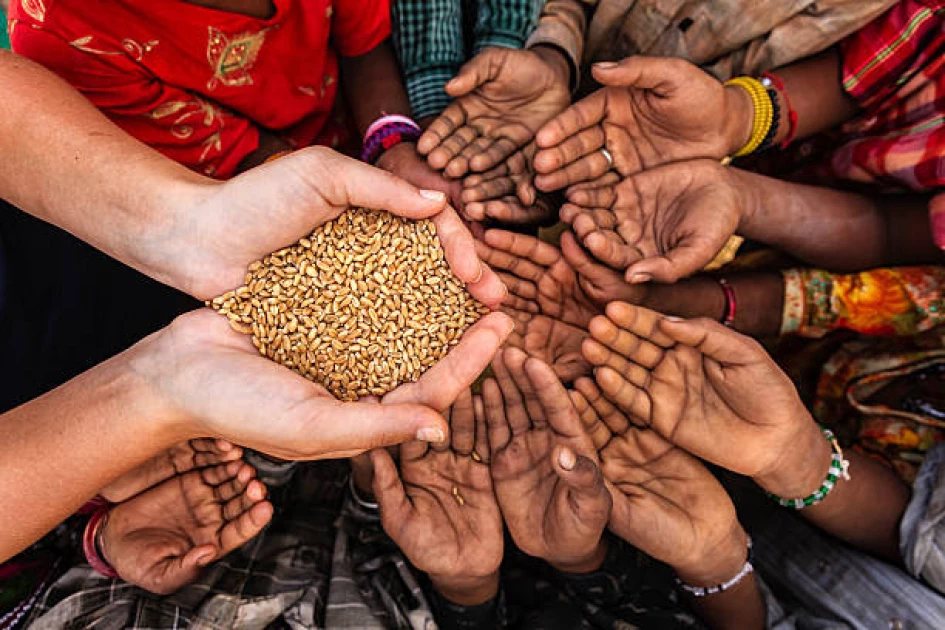Published on: May 09, 2025 08:58 (EAT)

In the heart of Nairobi’s Mukuru slums, 38-year-old Beatrice
stirs a small pot of ugali over a charcoal stove. It’s the only meal she and
her three children will have for the day.
Despite the generous rains that have drenched Kenya over the
past month, food insecurity remains a harsh reality for families like hers.
Beatrice’s experience highlights a broader national paradox:
while recent rainfall has revived some farmlands, it has not translated into
food on many Kenyan tables.
According to Twaweza’s Sauti za Wananchi survey, a
significant number of households still survive on just one or two meals daily.
Over 61% of families report reducing meal portions due to
high food prices and limited access to affordable produce.
Kenya’s economy heavily depends on agriculture, which
contributes about 21% directly to the GDP and up to 33% when related sectors
like agro-processing and transport are included, according to KNBS and the
World Bank.
The sector supports over 70% of rural households and is the
main source of employment and income for millions.
Yet, paradoxically, hunger persists even during good
harvests, revealing flaws in the food system.
High production costs, limited access to quality inputs, and
poor market linkages undermine small-scale farmers—who form the backbone of
food production—making it difficult for them to compete or sustain their
livelihoods.
Changing weather patterns, land degradation, and urban
expansion further threaten the shrinking farmland.
Without urgent policy reforms and increased investment in
smallholder support, Kenya risks deepening food insecurity despite its reliance
on agriculture as a key economic pillar.
President William Ruto’s administration, echoing previous
efforts under the Big Four Agenda, has prioritized agriculture.
Initiatives include fertilizer subsidies and farmer-centered
interventions aimed at lowering food prices.
These efforts, coupled with favorable rains, have boosted
maize production in regions like the Rift Valley and Western Kenya. However,
these gains are uneven.
In arid and semi-arid lands—such as Turkana, Marsabit, and
Garissa—erratic rainfall, poor infrastructure, and insecurity continue to
hamper food production.
The Food and Agriculture Organization estimates that over
3.5 million Kenyans in these counties are food-insecure, with children under
five being the most affected.
Urban areas are also struggling. In Nairobi’s informal
settlements, low incomes and high living costs exacerbate food scarcity.
The Sauti za Wananchi
survey reveals that nearly half of urban respondents skip meals at least twice
a week. The hunger afflicting slum dwellers mirrors the crisis in
drought-affected regions.
Kenya’s reliance on food imports further complicates the
situation. The Kenya National Bureau of Statistics reports an 18% increase in
maize and rice imports in 2023.
This dependency is driven by high local production costs,
worsened by land-use changes.
Fertile farmland in peri-urban areas like Kiambu, Kajiado,
and Machakos has been overtaken by housing developments, supermarkets, and
industries.
The ambitious Galana-Kulalu Food Security Project, launched
in 2014 as a 1.2-million-acre irrigation scheme in Tana River, epitomizes this
challenge.
Despite billions spent, it failed due to poor planning,
corruption, and community disengagement, yielding minimal harvests.
Food insecurity’s consequences extend deeply into children’s
health and education. UNICEF reports that 22.3% of Kenyan children under five
are stunted due to chronic under nutrition.
In affected areas, school attendance drops, and performance
suffers; hungry children struggle to concentrate, and adolescent girls often
marry early to escape poverty.
Kenya’s 2010 Constitution guarantees the right “to be free
from hunger and to have adequate food of acceptable quality” under Article 43 (1)
(c).
Yet, many families’ experiences fall short of this
constitutional promise. Bridging this gap requires deliberate, inclusive policy
action.
The shift to the Competency-Based Curriculum (CBC) offers
hope. Unlike the previous 8-4-4 system, CBC emphasizes life skills and
environmental education, potentially fostering a generation more aware of food
systems and sustainability.
Proper implementation could empower students with practical
knowledge to address food security challenges.
Nevertheless, structural reforms are crucial. Smallholder
farmers, responsible for over 70% of Kenya’s food, need access to quality
seeds, credit, and modern tools.
Improving extension services, storage facilities, and local
markets can reduce post-harvest losses—estimated at 30–40% for some crops by
the World Bank. Land-use policies must be revisited to protect prime
agricultural land from encroachment, while urban agriculture should be promoted
as a supplementary food source.
Women, who comprise the majority of Kenya’s agricultural
workforce, require targeted support. Enhancing their access to land, finance,
and decision-making can significantly improve food security outcomes.
Media and civil society play vital roles in raising
awareness and advocating for change.
Education campaigns, investigative journalism, and community
engagement can foster a culture of food rights and accountability.
Organizations like Twaweza provide valuable data through
platforms such as Sauti za Wananchi, informing evidence-based policies.
Religious leaders and community elders also have
influence—they can promote responsible resource use, family planning, and
collective responsibility to bolster food resilience.
Kenya stands at a crossroads. With the rains returning and a
growing population, the nation has a window of opportunity to transform its
food systems.
This requires bold leadership, coherent policies, and
inclusive planning. Moving beyond reactive measures, Kenya must proactively
build food resilience—fulfilling the promise of Article 43 and transforming the
daily reality for families like Beatrice’s.
Only then will the promise of Article 43 and the hope in
Beatrice’s kitchen become a national reality.
The author, Dr. James Ciera, is Twaweza Kenya’s country lead and a senior data analyst.
Additional reporting by Citizen Digital team.

